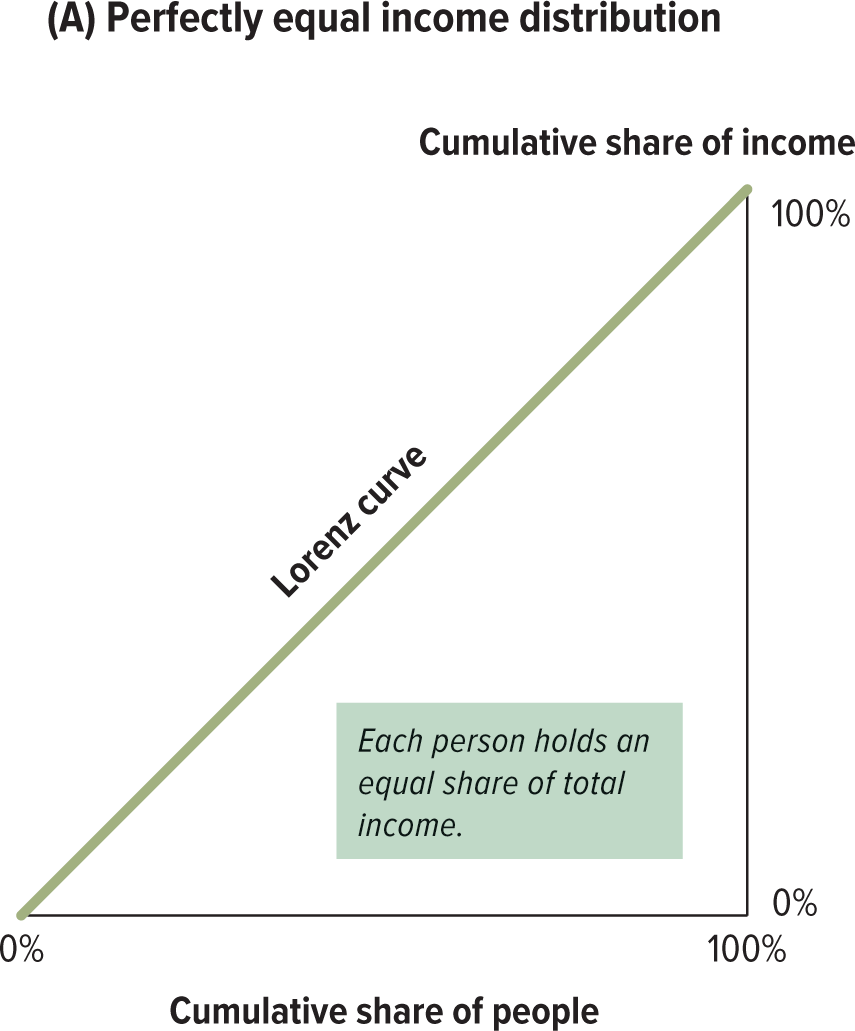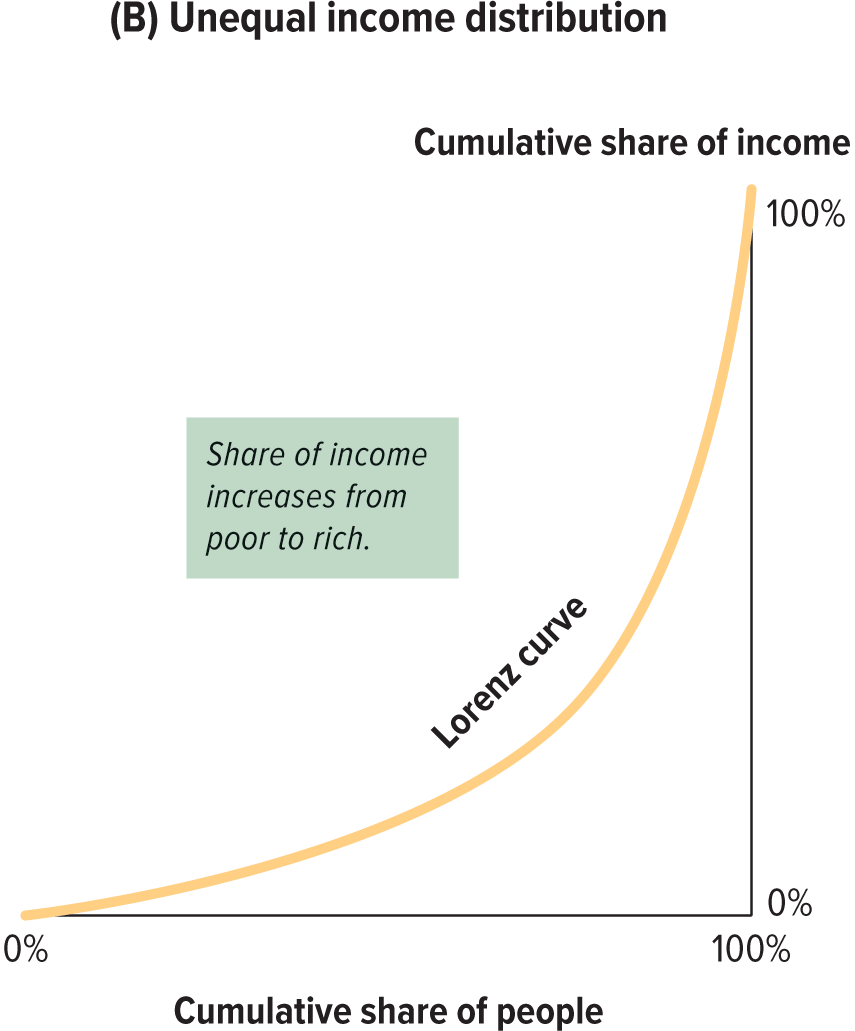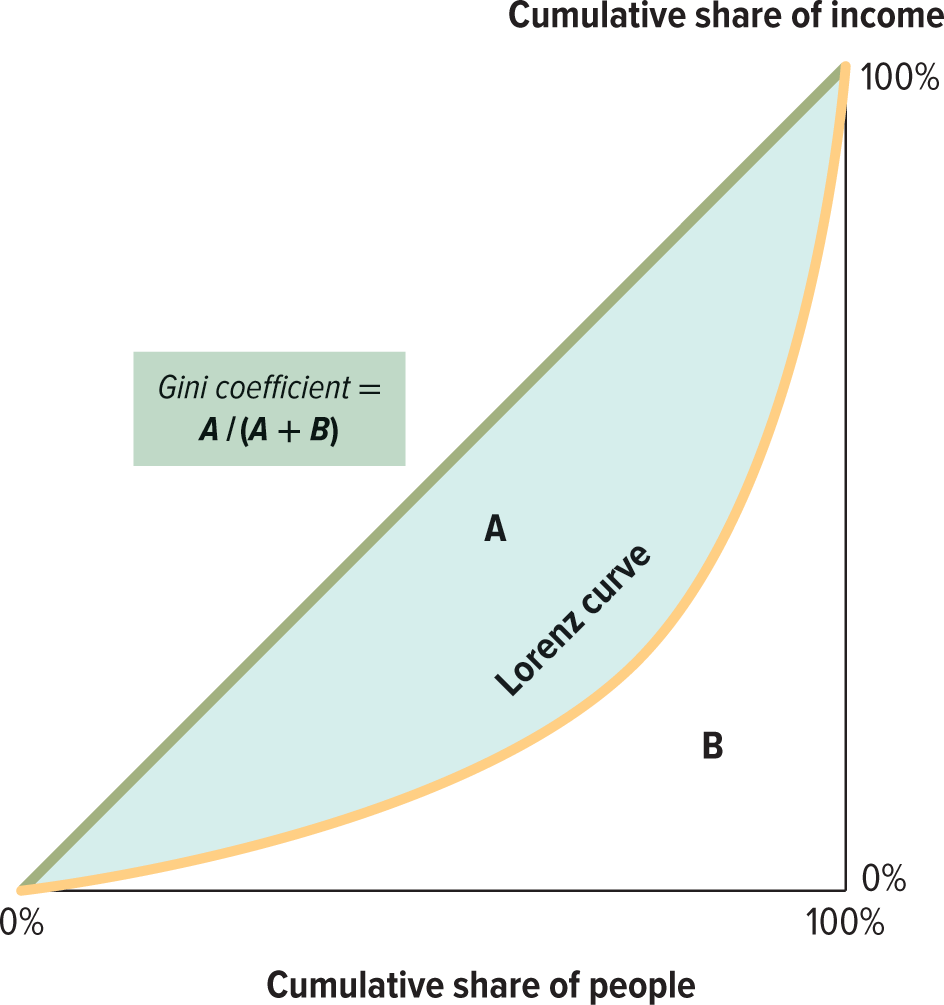Poverty, Inequality, and Discrimination - chapter 21
21.1. Measuring Poverty
- absolute poverty line: a measure that defines poverty as income below a certain amount, fixed at a given point in time
- The poverty line is fixed at a certain dollar amount at a given point in time; it is usually set based on the on the cost of the certain essential goods
- relative poverty line: a measure that defines poverty in terms of the income of the rest of the population
- poverty rate: the percentage of the population that falls below the absolute poverty line
- Absolute poverty lines measure people’s access to concrete goods and services; relative poverty lines do a better job of capturing the importance of economic conditions relative to those of others
21.2. Why are People Poor
- There are some common factors that help explain why poverty continues to exist
- human capital: the set of skills, knowledge, experience, and talent that determine the productivity of workers
- We tend to see poverty continue from generation to generation, although we can’t say for sure whether this is because low human capital causes poverty or because poverty causes low human capital
- There are also poverty traps which are self-reinforcing mechanisms that cause the poor to stay poor
21.3. Measuring Inequality
- purchasing power parity (PPP) index: index that describes the overall difference in prices of goods between countries
- Income inequality is commonly summarized by measuring the average income in each quintile of the population, or the percentage of total income held by people in each quintile
- credit constraint: inability to get a loan even though a person expects to be able to repay the loan plus interest
- Lorenz curve: a graphic representation of income distribution that maps percentage of the population against cumulative percentage of income earned by those people


- Gini coefficient: a single-number measure of income inequality; ranges from 0 to 1, with higher numbers meaning greater inequality

21.4. Inequality vs Mobility
- income mobility: the ability to improve one’s economic circumstances over time
- Measuring income mobility in a country tells us how likely you are to end up rich is you start poor, or the opposite
- We can measure income mobility in relative and absolute terms
- In absolute terms, we can look at whether a person’s income is higher than their parents’
- In relative terms, we can look at whether a person’s income places them higher up in the income distribution than their parents
21.5. Public Policy Goals
- 4 main policies are used to reduce poverty and inequality
- Progressive taxation reduces inequality, as it taxes the rich at a higher rate than the poor, narrowing the gap between the 2 groups
- Income support comes in two forms
- conditional cash transfer: a program in which financial support is given only to people who engage in certain actions
- in-kind transfers: programs that provide specific goods or services, rather than cash, directly to needy recipients
- social insurance: government programs in which people pay into a common pool and are eligible to draw on benefits under certain circumstances
21.6. Trade-offs Between Equity and Efficiency
- Means-tested: the characteristic of a program that defines eligibility for benefits based on recipients’ income
- Involves not just a simple eligible/not-eligible distinction, but also a determination of how much recipients are eligible to receive
- Anytime benefits decrease as income increases, the motivation to earn additional income is reduced
- There is no way to prevent everyone from falling through the cracks without loss of efficiency
- Economists see a trade-off between equity and efficiency in poverty policy
- Trade-offs are also created due to the inefficiencies created by taxes levied to pay for anti-poverty programs
21.7. Discrimination
- Income for adults varies widely by race and gender in Canada
- Discrimination: making choices by using generalizations based on people’s observable characteristics like race, gender, and age
- Can also be a result of factors related to earnings and race or gender, such as education, work experience, and choice of occupation
- Under some conditions, markets may help to eliminate discrimination
- When consumer preferences are not in agreement with the discrimination, markets will cause those who discriminate to lose profitable opportunities
- When consumer preferences support discrimination, discrimination and efficient markets can coexist